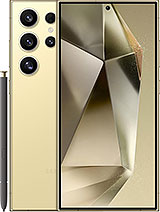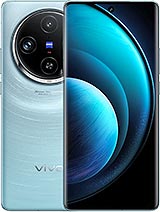Google Pixel 9 Pro XL review
Competition
The Pixel 9 Pro XL's main rivals aren't a mystery, and with the price tag on Google's latest set at $1,200/€1,200, the numbers are more or less closely aligned. In addition to the most obvious alternatives, however, there may be a few other avenues to explore.
It would make sense to start with the in-house competition first. The 9 Pro non-XL, for example, is essentially the same thing as the XL, only smaller. We haven't tested it, but we're not expecting its battery life to be significantly shorter, and other than that (and the obviously smaller display), there's nothing to separate the two - get the Pro to save some grams in your EDC, get the XL for the extra screen estate.
You could swing the other way and go for the Pixel 9 Pro Fold to get the most screen estate on a Pixel. That will set you back some 50% more money, plus you'll be sacrificing camera performance and, very likely, battery life. A lot more display, though.
A case could also be made for the Pixel 8 Pro. You'll be saving some cash - at least $100/€100, but likely more - and making few concessions. The 8 Pro's display isn't as record-settingly bright, but it's still brighter than most, and while battery life has been improved on the new generation, it's not exactly dramatically so. The 7-year update policy on both means you'll very likely have replaced either one long before it makes a difference. The 9 will probably be that extra bit quicker at AI tasks, sure, but it begs the question of how much quicker with the Tensor G4 TPU being the same as in the G3, and how much does it really matter?
![]()
![]()
![]()
Google Pixel 9 Pro • Google Pixel 9 Pro Fold • Google Pixel 8 Pro
Moving on to the real competition, there isn't a more natural rival than the iPhone 15 Pro Max (though a 16 Pro Max will be taking its place shortly). The iPhone is a better option for video recording, though outside of that, the cameras are relatively closely matched. You can count on better endurance with the Pro Max, too. This one will, as always, likely be decided based on ecosystem considerations. The iPhone is a cool 20% more expensive in Europe and also pricier in other markets, so that's one extra argument against it outside the US.
In contrast, the Galaxy S24 Ultra is somewhat less expensive than the Pixel in Europe and more or less the same price as the Google phone in the US or India. It removes the OS conundrum from the equation above and gets you an S Pen and a close-focusing telephoto as the highlight of being a generally better cameraphone.
If it's a cameraphone you're after and you're not dead-set on the Pixel processing, there are objectively better options even though some might consider them obscure. The vivo X100 Pro springs to mind, with a nicely capable 1-inch main camera and a competent telephoto. That last bit gets even better with an X100 Ultra if you can get your hands on one and can live with some limitations stemming from its Chinese software, but that might be way too big of a stretch for the crowd that's normally eyeing a Pixel. There'll be no software compromises if you opt for the Xiaomi 14 Ultra, and you'll get another 1-inch main camera (with a variable aperture, no less) and two telephotos.




Apple iPhone 15 Pro Max • Samsung Galaxy S24 Ultra • vivo X100 Pro • Xiaomi 14 Ultra
Verdict
The Pixel 9 Pro XL brings relatively major stylistic changes plus some hardware upgrades that do make it a better phone than the previous generation. The brighter display is a welcome improvement, of course, and it's possibly the brightest in the business, though it's not like the 8 Pro was lacking in this respect. Battery life has been a blemish for Pixels in head-to-head comparisons, and the new model is a step up in this respect, though it remains in a trailing position among its peers.
The Pixel's biggest selling point lies in its AI capabilities, Google wants us to believe. A bunch of software features are at your disposal for both work and play and image editing tools can help save a photo that circumstances tried to ruin. Having a phone that's made by the OS maker has its benefits even if they're hard to quantify.
We're not quite as thrilled with the camera system as we would have hoped to be, though. The Pixel is lagging behind some of the trends and just because AI can enhance photos and even make up stuff that wasn't there, doesn't mean it can be used as a replacement for state of the art camera hardware. The brand new selfie camera is pretty great, the others fail to excite.
Of course, the Pixel 9 Pro XL is a well rounded and fully capable high-end smartphone - that's beyond debate. This generation prioritizes the phone's development as a vehicle for Google's AI pursuits - if you're into that and want to ride the AI wave, by all means go for it. There are also meaningful improvements on some of the fundamentals to appeal to the AI skeptics. The camera enthusiasts, on the other hand, will probably not be overly... enthused.
Pros
- Brightest display we've tested.
- Longest battery life on a Pixel, fastest charging too.
- Android from the source, 7 years of updates.
- All the AI smarts you can think of.
- Superb selfies.
Cons
- Battery life is behind the competition.
- Camera hardware could use an upgrade - you can only do so much with AI.
- Video quality not up to scratch.
Reader comments
- Anonymous
- 03 Mar 2025
- krZ
I just got One, And i totally Love this Phone. It has Everything I Seem to need 👍
- Aslam
- 29 Jan 2025
- uC8
Price of 128 GB is higher than 264 GB. Why?

